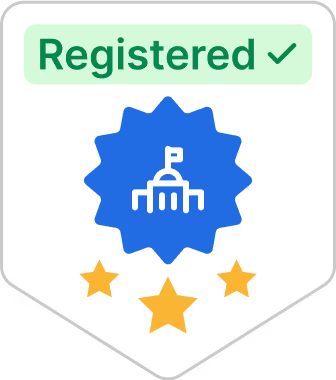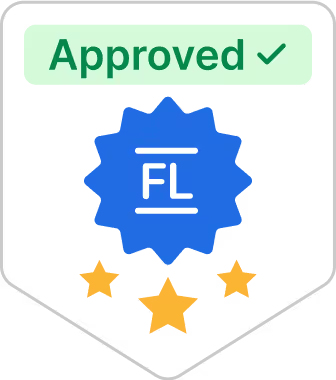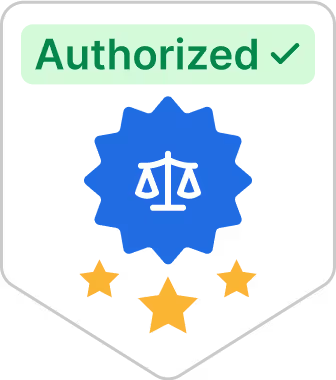What is Supplemental Security Income?

There are several different government programs that provide financial relief to individuals and families in need. It can be a challenge to figure out which of these programs is right for you. The social security benefits and eligibility requirements of each program are not always the same. Plus, the application process can be a headache.
This quick guide will answer all of your questions about one particular government program called SSI. The first question: what does SSI stand for? The answer: Supplemental Security Income. Before we get into questions about SSI vs. SSDI and how to apply for SSI, let’s cover the basics.
Follow along as we’ll show you how to qualify for SSI, and how to make your application that much more simple.
Who is eligible for SSI benefits?
The SSI program provides supplemental income to people who do not earn enough on their own to make a living. SSI is just one part of a larger network of social programs administered by the Social Security Administration (SSA). As such, it has unique eligibility requirements that can differ from other SSA programs like Social Security Disability Insurance (SSDI).
In general, SSI can be claimed by:
- People who are over 65 years old
- People with a disability or blindness
- People with substantially limited income and financial resources
Limited income
Unlike disability insurance, supplemental income applications do not factor in previous work experience like some disability benefit programs. However, to qualify you will have to prove that your income is sufficiently small and that you lack other financial assets. According to the AARP, the SSI standard for meeting the description “limited income” is $783 per month for the year 2020. That figure represents individual income—the amount increases to $1,175 per month for a couple.
What the SSI considers “income” is more than just payment from an employer or profit from a business. If you receive other Social Security benefits, for example, that money is also considered income. SSI eligibility considers factors like income limit to decide who is eligible to receive the supplemental payment help.
Countable resources
In addition to verifying your limited income, the SSA takes note of your other financial assets—what they call “countable resources”—in the application process. Countable resources can include cash savings, stocks, bonds, property, and more.
However, property that is essential to your life will not be considered a countable resource. Items that will not be counted include the home you live in and the vehicle you rely on for transportation.
To have your SSI claim validated and receive benefits, you may not have more than $2,000 in countable resources as an individual. That figure goes up to $3,000 for a couple.
Qualifying for SSI with a disability
People with disabilities can receive both disability insurance and supplemental income. However, disability insurance is funded by Social Security taxes, so recipients must have worked a certain number of years before applying to be eligible. SSI is funded directly from the U.S. Treasury, and prior work experience is not a requirement. Some people with disabilities may be able to qualify for both SSDI and SSI.
If you’re applying for SSI with a disability, it is best to apply as soon as you realize you may have a medical condition that will fully impair your ability to earn a living. Your medical condition must last a year, or lead to your death, to qualify as a disability.
The Blue Book
The SSA’s definition of what qualifies as being disabled may differ from your definition, or that of your doctor. To let people know exactly what conditions can qualify for disability insurance and supplemental income, the SSA keeps a list of eligible conditions that they call the Listing of Impairments. This list is more commonly referred to as the Blue Book. You can access all of the Blue Book online.
The Blue Book is separated into 14 different categories of medical conditions. A few examples of these include:
- Respiratory disorders
- Musculoskeletal system impairments
- Mental disorders
- Cardiovascular system impairments
- Special senses and speech impairments
Within each of these categories, there are multiple qualifying conditions. Some of the most common conditions that regularly qualify are COPD, asthma, and disorders of the spine.
Medical evidence
No matter what your medical condition is, you will have to prove sufficient medical evidence to qualify. This evidence can consist of:
- Laboratory test results
- X-rays and MRIs
- Physical evaluations and exercise tests
- Psychological evaluations
You will be asked to provide contact information for any doctors who have treated your condition, hospitals you have stayed in and the dates of your visit, caseworkers you have met with, and the names and dosages of any prescription medicines you take.
Medical vocational allowance
If your condition is not listed in the Blue Book, you may still be able to qualify if the condition is severely impairing. Just like any other claim, you will have to provide sufficient medical evidence that proves your condition limits your ability to work. Some examples of conditions that are not listed in the Blue Book, but have been approved for benefits through a medical vocational allowance, include:
- Migraines
- Chronic pain syndrome
- Arthritis
What do you get from SSI benefits?
SSI provides a monthly cash payment. This amount corresponds to the standard for limited income. That means, in 2020, an eligible individual can receive up to $783 per month. A couple can receive up to $1,175 per month.
However, not everyone receives the same amount. Forty-six U.S. states and the District of Columbia have their own supplemental income programs. These programs provide additional money on top of the federal SSI payment. The additional amount varies from state to state. The four states that do not have an individual supplemental income program are:
- Arizona
- Mississippi
- North Dakota
- West Virginia
SSI for residents of U.S. territories
People who reside in the Northern Mariana Islands can receive federal SSI benefits. However, the territory does not have its own supplemental income program.
SSI is not available in the following U.S. territories:
- Puerto Rico
- The U.S. Virgin Islands
- American Samoa
- Guam
Medicaid
Typically, people who have SSI claims approved are also eligible for Medicaid. Medicaid is a government health insurance program that helps elderly and at-risk individuals pay for doctor bills, hospital visits, prescription drugs, and other healthcare costs.
In 33 U.S. States and territories, the SSI application is the Medicaid application. You only have to fill out a single form—they’re one and the same. Other states and territories require a separate application.
SNAP
An SSI recipient may also be eligible for the Supplemental Nutrition Assistance Program (SNAP) benefits. This is a federal program that helps low-income Americans buy the food they need to feed their families. With over 9.5 million American families taking part in SNAP, it is the largest program in the United States aimed at ending hunger.
SNAP benefits are delivered through electronic debit (EBT) cards which can be used to buy certain grocery items and products. More than 238,000 American retailers are authorized to work with the SNAP program, selling specific items that can be purchased with an EBT card.
These items generally include nutritious foods, such as:
- Breads
- Cereals
- Fruits
- Vegetables
- Meat
- Fish
- Dairy products
SNAP benefits do not cover the following kinds of purchases:
- Alcohol
- Tobacco products
- Household supplies
- Vitamins
- Medicines
SSI benefits for children
Children can also receive SSI benefits if they have a disability. The second half of the Blue Book is dedicated to a list of medical conditions that could qualify children for benefits. Like adults, children must have a severely limiting disability that is well-documented with medical evidence.
However, the criteria that the SSA uses to determine what counts as “severely limiting” is different for children and adults. The criteria for adults is based predominantly on an individual’s capacity to perform work-related activities, such as:
- Walking, sitting, and standing for long periods of time
- Bending and reaching
- Speaking and communicating with others
For children, the criteria is based on an individualized functional assessment (IFA) that focuses on general physical and cognitive ability with a lesser emphasis on the ability to do work tasks.
How to apply for SSI benefits
You can apply for SSI benefits in three ways: online, by mail, or in person at any of the local social security office locations.
If you plan to apply in person, you can call ahead to set up an appointment. The SSA’s toll-free phone number is 1-800-772-1213.
If you plan to apply through the SSA website, you must meet the following criteria:
- You are between the ages of 18 and 65
- You have never been married
- You are a U.S. citizen residing in one of the 50 states, Washington D.C., or the Northern Mariana Islands
- You haven’t applied for or received SSA benefits previously
- You want to apply for SSDI benefits simultaneously
The importance of Social Security
Now you have all the information you need to answer the question: what is supplemental security income?
The most important part of applying for SSI—and all the other benefits you can get through the SSA—is having a Social Security card. Although these cards don’t expire, they can be very difficult to replace if you lose it. Simplify the process and apply for a social security card online with GOV+.
Sources:
- SSA. You May Be Able to Get Supplemental Security Income (SSI). https://www.ssa.gov/pubs/EN-05-11069.pdf
- AARP. Who is eligible for SSI?. https://www.aarp.org/retirement/social-security/questions-answers/ssi-eligible/























